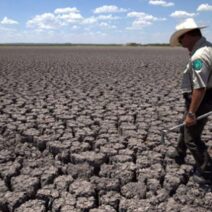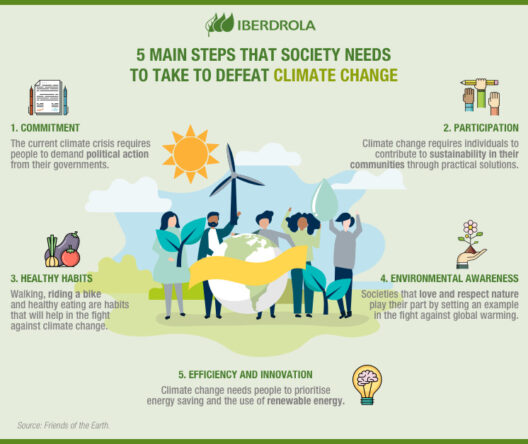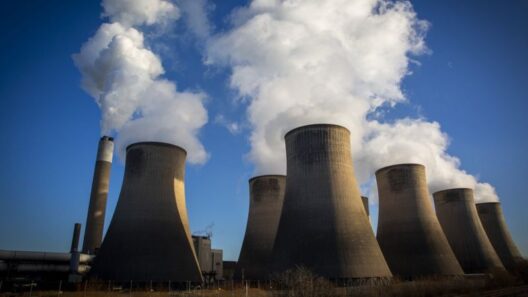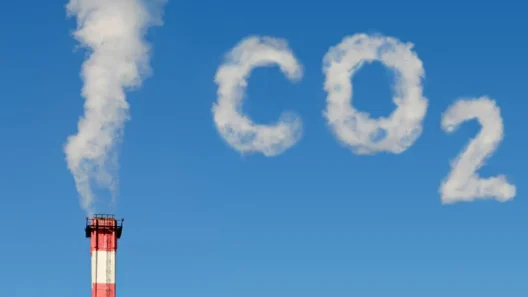Deforestation, the large-scale removal of trees from forested areas, is a pressing global concern that is intricately tied to the ongoing climate crisis. Each year, millions of hectares of forest disappear, leading to profound ecological consequences. Yet, the ramifications of deforestation extend far beyond mere loss of trees. There is an urgent need to understand the multifaceted ways in which deforestation exacerbates climate change and the implications for the planet’s future.
To appreciate the driving forces behind climate change, it is essential to recognize the fundamental role forests play in the Earth’s carbon cycle. Trees naturally sequester carbon dioxide, a significant greenhouse gas. They do this through the process of photosynthesis, where they absorb CO2 and release oxygen. When forests are cut down, this carbon storage capacity is diminished dramatically. Not only do we lose the active carbon sinks that forests represent, but the process of deforestation itself releases substantial amounts of stored carbon back into the atmosphere, further intensifying the greenhouse effect. According to various estimates, deforestation contributes nearly 10-15% of global greenhouse gas emissions, underscoring its significance in the climate equation.
The direct impact of deforestation on the climate is exacerbated by a cascade of secondary effects. One such effect is the alteration of local and global weather patterns. Forests have a unique ability to retain moisture, influencing rainfall distribution and maintaining regional climatic balance. The removal of these trees can lead to drier conditions and disrupt rainfall cycles, often resulting in droughts or erratic precipitation patterns. This shift can endanger agricultural productivity, leading to food insecurity and further exacerbating socio-economic challenges.
While the climate ramifications are severe, the biodiversity crisis stemming from deforestation is equally alarming. Forests are home to approximately 80% of terrestrial species, ranging from majestic mammals to irreplaceable flora. The destruction of these habitats not only leads to species extinction but also disrupts entire ecosystems. When a single species is lost, it can have a domino effect on others, leading to a collapse of ecological networks. This loss in biodiversity diminishes the resilience of ecosystems, making them less capable of withstanding environmental stresses, including those brought about by climate change.
Furthermore, deforestation often takes place in conjunction with unsustainable practices such as agriculture, mining, and urbanization. Areas that once thrived with diverse ecosystems are frequently transformed into monoculture plantations or urban sprawl. This shift not only eliminates invaluable habitats but also perpetuates soil degradation, increased runoff, and the loss of fertile land. The repercussions are profound: as soil quality diminishes, agricultural systems become less productive, requiring more fertilizer and water to sustain crop yields, which further contributes to environmental degradation.
Moreover, the implications of deforestation extend into socio-economic dimensions, particularly affecting indigenous communities. Many of these groups rely on forests for their livelihoods, cultural practices, and spiritual well-being. The encroachment of commercial interests often leads to land dispossession and conflicts, exacerbating vulnerability and social inequities. As the guardians of forest ecosystems, indigenous populations play a crucial role in sustainable land management, and their involvement is essential in mitigating deforestation’s impacts and fostering climate resilience.
Despite the gravity of the situation, there exists a burgeoning awareness of the need for reforestation and forest preservation initiatives. Organizations and governments are beginning to take actionable steps to safeguard the remaining forested areas through protective policies, restoration projects, and advocacy efforts. Incorporating innovative reforestation techniques, such as agroforestry, offers the promise of restoring biodiversity while simultaneously supporting agricultural productivity. Agroforestry integrates trees and shrubs into agricultural landscapes, creating multifunctional systems that enhance ecosystem services while providing economic benefits to farmers.
Furthermore, the emerging field of ecosystem services is shedding light on the tangible benefits that forests provide beyond their environmental role. Forests contribute to clean air and water, regulate temperatures, and offer recreational opportunities. By recognizing and quantifying these services, policymakers can make more informed decisions, linking environmental health with economic viability. This paradigm shift could foster a new relationship between society and nature, moving away from exploitative practices towards a more symbiotic coexistence.
The global community stands at a crossroads, faced with the urgent need to reconcile economic development with environmental sustainability. In a world increasingly recognizing the interconnections between human activity and ecological integrity, it is imperative to prioritize practices that promote forest conservation and restoration. Addressing the challenge of deforestation is not merely an environmental issue; it is a crucial component of broader climate action efforts. Through education, advocacy, and community engagement, we can cultivate a more profound understanding of the importance of forests in combating climate change, ultimately laying the groundwork for a healthier planet.
In conclusion, deforestation is a root cause of the climate crisis that demands immediate and concerted action. The consequences of our actions extend beyond the horizon of visible trees; they encompass a complex web of ecological, economic, and social factors. By addressing this critical issue holistically and fostering a global stewardship ethos, we can redirect the course of our planet’s future. The time for dialogue and action is now; a shift in perspective is essential, encouraging a deep-rooted commitment to both preserving our forests and nurturing the intricate system of life they support.






